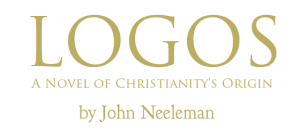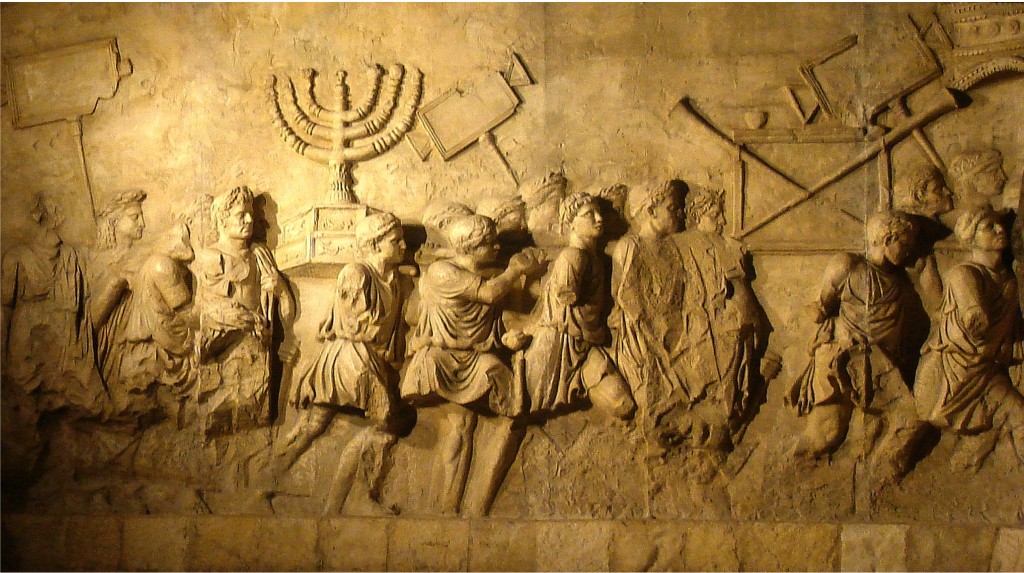A novel’s opening line is important. According to Stephen King, “An opening line should invite the reader to begin the story. It should say: Listen. Come in here. You want to know about this.” And there is none better than the immortal opening line of Umberto Eco’s The Name of the Rose: “In the beginning was the Word, and the Word was with God, and the Word was God.” You may recognize it also as the first sentence of the Gospel of John, John 1:1.
I think I understand completely why Eco made the Gospel of John’s opening line that of his own celebrated novel. John 1:1 always gives me a little shiver. I recognize that–I am happy to accept that–this may be for no reason other than its sheer artistry. I can attest that there is plenty of meaning in the Bible for the full range of believers, unbelievers, scriptural literalists, and scriptural skeptics.
What this means of course is that the Bible is subject to a multiplicity of subjective interpretations. Is the author of John being ironic? Is the author of John giving us a sly wink? About John 1:1, an unbeliever can say, “Aha! Yes, I agree. God is just that–the word–a literary character; he’s just words created by humans.” But if you write John 1:1 as the original (anonymous) author of the Gospel of John intended–closer to as it was originally written in Greek–or as Goethe wrote it in Faust–“in the beginning was Logos, and Logos was with God, and Logos was God,” the potential meanings multiply still more. As packed with meaning as is our English word “word,” “logos” has even much more. Even to a thoughtful unbeliever, the power of the Christian story, of those mere words – for better or worse, whatever your unbelief–must be undeniable.
In his superb New Yorker blog article this week, “In Search of the Great American Bible” (February 9, 2015), Rollo Romig notes: “Only scripture inspires this kind of extreme explication” such that “every letter and number is routinely scrutinized for esoteric messages, using methods ranging from gematria to theomatics to Koranic symmetry to Equidistant Letter Sequences.”
My novel Logos has as an epigraph the following quotation, also one of my favorite scriptural passages, and again from John (John 18:37-38): “Pilate therefore said unto him, Art thou a king then? Jesus answered, Thou sayest that I am a king. To this end was I born, and for this cause came I into the world, that I should bear witness unto the truth. Every one that is of the truth heareth my voice. Pilate saith unto him, What is truth?” Here I certainly picture that, with that last sentence, the author of John is giving us a sly wink.
However, mainstream scholars recognize that there was certainly a historical Jesus. Harold Bloom has written: “There was an historical Jesus, but we know virtually nothing about him. The only source we more or less can trust is the Jewish historian Josephus, from whom we glean a few facts: Joshua, the son of Joseph and Miriam, became a disciple of John the Baptist, a charismatic reformer of spirituality. This Joshua (Jeshua in Hebrew, Jesus in Latin[, Yeshua in English]) in turn developed into a charismatic wisdom teacher, followed by a number of Jews, but he was then crucified by the Romans, after evidently provoking at least some religious authorities among the Jews.” Bloom, Harold, Genius: A Mosaic of One Hundred Exemplary Creative Minds, “Saint Paul” (Grand Central Publishing 2002).
We also know something about the political environment in Palestine at the time: There was a dominant imperial power–Rome–which ruled by means of local client autocrats, including a Jewish King (the Herodian dynasty) and a theocracy (the Temple cult). And there were many poor, and revolutionaries whom Josephus called “Sicarii” or “Zealots”. Among the dissidents there were also Jewish pacifists, who lived monastically, and preached against the worldliness and the acquisitiveness of the priests, and against animal sacrifices, eating meat, and slavery, and practiced celibacy. They also prophesied that an apocalypse, the end of the world, was at hand. The most prominent among these were the Essenes. Of course from the vantage of our age, we have seen a similar set-up throughout the ages, up to the present. John the Baptist and the historical Jesus emerged as charismatic leaders among the radicals. This dynamic is also familiar to us in a variety of historical and geographic contexts throughout history and the world.
Aside from Josephus, we have the New Testament as a source for the historical Jesus. Should it be completely disregarded because it would require us to believe that Jesus walked on water, turned water into wine, rose Lazarus from the dead, and rose from the dead himself? Here is what Rollo Romig has to say about the historicity of scripture: “The twenty-first century has seen a stiffening of literalism among believers and nonbelievers alike—an insistence that all writing must be classified as either fact or fiction, no gray allowed. For serious Biblical scholars, truth is a nuanced affair; contrary to popular understanding, inerrancy, infallibility, and literalism are all distinct positions. The fashionableness of a fact-or-fiction binary puts avowed believers on the defensive, forcing them to choose between admitting to ridiculous-sounding convictions or denying their faith.” “In Search of the Great American Bible” (New Yorker online, February 9, 2015). He suggests that a proper reading of scripture requires that the reader “understands how myth works.”
In his epic poem The Marriage of Heaven and Hell, William Blake wrote that the variety of religion arises from “choosing forms of worship from poetic tales.” Tolstoy gives us a glimpse of this process at work in a War and Peace passage that has left a deep impression on me. Here is teenaged Natasha at church, filled with distress about the invasion by Napoleon’s army that has rent her country, threatens her family’s security, and has sucked up two young men whom she has loved: “In Natasha’s receptive condition of soul this prayer affected her strongly. She listened to every word about the victory of Moses over Amalek, of Gideon over Midian, and of David over Goliath, and about the destruction of ‘Thy Jerusalem,’ and she prayed to God with the tenderness and emotion with which her heart was overflowing, but without fully understanding what she was asking of God in that prayer.”
Rollo Romig concludes that the present “fact or fiction binary” respecting scripture “seems to me a significant cultural loss.” How significant a loss? Harold Bloom has argued that the King James Bible (“KJB”) “stands at the sublime summit of literature in English,” rivaled only by Shakespeare. “Originally the culmination of one strand of Renaissance English culture the KJB became a basic source of American literature: Walt Whitman, Herman Melville, Emily Dickinson are its children, and so are William Faulkner, Ernest Hemingway, Cormac McCarthy. The KJB and Shakespeare fuse into a style of language that enabled the emergence of Leaves of Grass, Moby-Dick, As I Lay Dying, Blood Meridian. Whitman’s verse and Hemingway’s prose alike stem from the KJB.” Bloom, Harold, The Shadow of a Great Rock: A Literary Appreciation of the King James Bible (Yale University Press 2011). [1] http://www.theatlantic.com/entertainment/archive/2013/07/why-stephen-king-spends-months-and-even-years-writing-opening-sentences/278043/
 John Neeleman spends his days working as a trial lawyer in tall buildings in downtown Seattle. He lives in Seattle with his wife and children. He also represents death row inmates pro bono in Louisiana and Texas. As a novelist, his editorial model is historical fiction in a largely realistic mode, though there are hallucinatory passages that reflect Neeleman’s concern with philosophical and spiritual matters, in part a residue of his religious upbringing. He was raised as a seventh generation Mormon, and rebelled, but never outgrew his interest in metaphysical concerns. Logos, A Novel of Christianity’s Origin, is his debut novel. Order Logos on Amazon here»
John Neeleman spends his days working as a trial lawyer in tall buildings in downtown Seattle. He lives in Seattle with his wife and children. He also represents death row inmates pro bono in Louisiana and Texas. As a novelist, his editorial model is historical fiction in a largely realistic mode, though there are hallucinatory passages that reflect Neeleman’s concern with philosophical and spiritual matters, in part a residue of his religious upbringing. He was raised as a seventh generation Mormon, and rebelled, but never outgrew his interest in metaphysical concerns. Logos, A Novel of Christianity’s Origin, is his debut novel. Order Logos on Amazon here»

